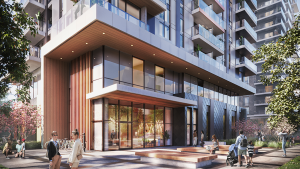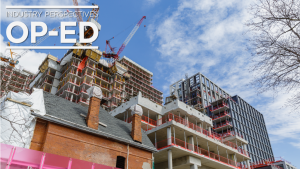There have been a couple of interesting developments in the field of construction materials lately, largely ignored by the people likely to be using them in the years to come.
It’s not surprising. There is usually little about the subject that grabs people’s attention. But as the environmental mess we’ve created for ourselves has become worse, we’re being forced to find and develop innovative materials to help minimize the degradation of the world around us.
That’s why two things caught my attention a few days ago. They involve new technology, but deal with two of the oldest construction materials in the world: clay brick and bamboo.
At Cornell University, which has a long history in the field of ceramics, researchers have developed something they call PolyBrick — ceramic bricks with unusual shapes manufactured using 3D printing, then fired to produce a strong, durable brick for building wall assemblies without using mortar.
The shape of the bricks can vary, depending on the design of the assembly. They have tapered dovetail joints much like those used in woodworking, and the tapered shape of the bricks themselves means they can be oriented in wall assemblies to maximize structural strength.
Jenny Sabine, a member of the development team, said that using the 3D printing technique "allows us to build and design like nature does, where every part is different."
As you might expect, these are high-tech bricks, designed using computer-aided design and manufacture to "tune" the structural lattice within each partially hollow brick. The design considers everything from porosity and curvature to the strategic placement of plumbing and mechanical building systems.
Sabin says the bricks’ structural lattice means they are cost-effective since they are light, and use less raw material than conventional clay bricks. They would be useful, she said, in large-scale construction.
As with anything new, these bricks won’t take the construction industry by storm. Instead, they are likely to be a niche product, of interest to architects who are looking for new ways to incorporate different shapes into their designs, while maintaining structural integrity.
The other research that caught my eye was the effort under way at the Massachusetts Institute of Technology, with the aid of architects and wood processors from Canada and the United Kingdom.
The hope is to find ways to turn bamboo into wood composites such as plywood.
Bamboo has been used in construction for centuries, mostly in southeast and east Asia. There is a bamboo bridge in China that is more than 1,000 years old.
Of course, bamboo isn’t that durable — far from it. Thanks to constant maintenance and repair, every part of that bridge has been replaced countless times.
Bamboo isn’t wood. It’s a grass, and like many grasses, it grows quickly. Some species can grow up to 46 metres in just six weeks, sometimes as much as 1.35 metres a day. It’s usually harvested when it’s about five years old. In North America, its biggest use apart from ornamental screens is as an alternative to hardwood flooring and the occasional plywood panels. But the lack of codes and standards has kept design professionals away from it.
That’s why researchers are looking for ways to design and make engineered bamboo products, much like the engineered wood products that are so familiar. To do that, though, they have to understand much more about the structural properties possible using engineered bamboo. And to do that, they need to understand bamboo at the microscale. That’s what MIT’s researchers are working at.
So don’t hold your breath waiting for a bamboo version of oriented strand board, or chipboard. There’s a lot of work yet to be done before that can happen. But it’s an interesting prospect.
Korky Koroluk is an Ottawa-based freelance writer. Send comments to editor@dailycommercialnews.com.










Recent Comments
comments for this post are closed